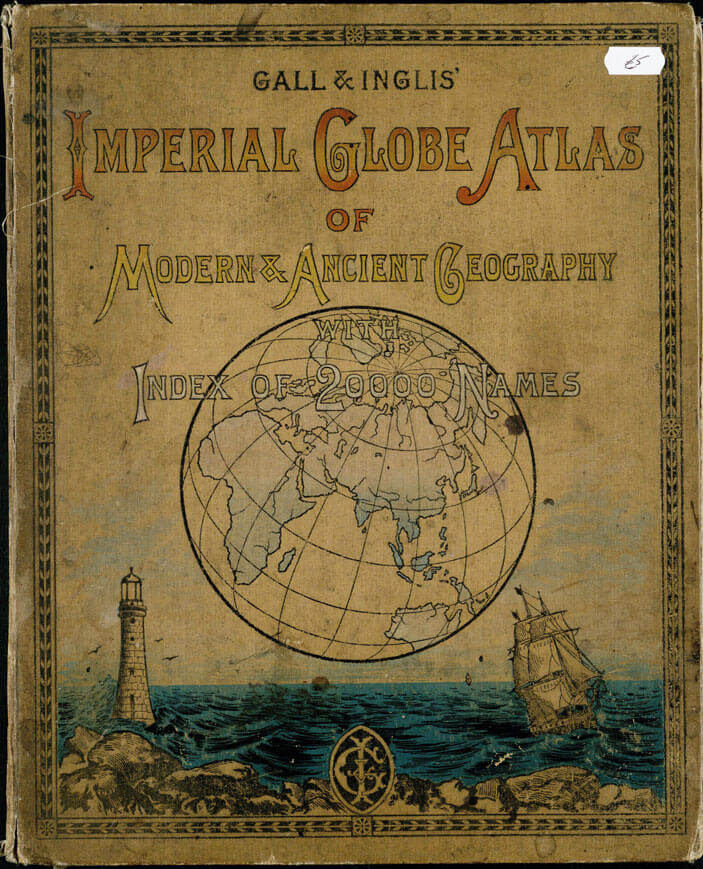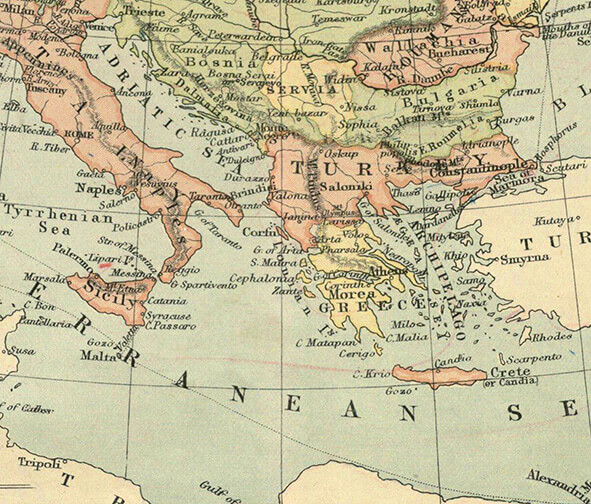Home
Introducing the Sandycove Atlas
The ‘Sandycove Atlas’ was discovered in Ireland in 2019. It’s a rather scruffy old book, published in 1903, and bought for 5 euros from a secondhand bookshop in Sandycove, a seaside suburb, 12km (7.5 miles) south-east of Dublin city centre.
The exciting thing about the Atlas is that it shows significant evidence it could have been used by James Joyce, one of the most innovative writers of the twentieth century, in the summer of 1904. At the time, Joyce was 22 years old and drifting rather aimlessly round Dublin. But in June he met Nora Barnacle, who became his lifelong partner, and in early October they eloped to Switzerland.
I suggest that Joyce may have borrowed the Atlas from Clifton School, near Sandycove, where he is known to have worked briefly. He may have taken it home to prepare a lesson, but then he seems to have started making marks on it which reflected what he was thinking about at the time. Ideas for his future – such as making a singing tour of English resorts – feature in some cases. Other marks can be related to passages in Ulysses, published 22 years later, and via that to his relationship with Nora..


It is these relationships with Ulysses which leads me to suggest that Joyce actually used the Atlas, and made those particular marks, in the summer of 1904. The action of Ulysses takes place within 24 hours of 16/17 June 1904 as his two heroes, Stephen Dedalus, avatar of the young Joyce himself, and Leopold Bloom, an avatar for everyman, wander round Dublin and eventually meet.
I am not suggesting that Joyce had details of Ulysses in mind when he made the marks. The mental traffic was in the opposite direction. Rather, that he used the Atlas as a ‘mother of memory’, particularly by recalling the physical actions of making the marks and the contexts in which that was done. He used many other prompts – Thom’s Street Directory of Dublin for example. But the Atlas, and the marks in it which reflected passing thoughts and situations, was available to him only in memory.
Tim Johnson, May 2024
How to use this resource
Discovery
The background to the Sandycove Atlas in full.
How it was bought by Tim Johnson for €5 in a second-hand bookshop. Why he concluded there was a very good case for suggesting James Joyce has actually used it. While the experts remain highly sceptical they agree enough on the provenance to allow it is certainly possible that he did use it.
Provenance
Tim Johnson returns to Ireland to see what Joyceans think of the Atlas.
Scepticism is general, but “Yes”, it was a school atlas, “Yes”, it spent it’s life within a few miles of Sandycove, and “Yes”, an Imperial Globe Atlas is just what the real-life headmaster at the school where Joyce taught for a while would have chosen.
Scenario
How, why and when could Joyce have come across the Sandycove Atlas and used it?
The Scenario sets out the chain of events which we assume took place. The beginning and end of the story are definitely known. Letters and news stories can place some of the marks on the timeline. We hope the other connections listed seem plausible at least.
The Case for Joyce
We pick out 14 examples of how marks in the Atlas relate to the text of Joyce’s works – mainly Ulysses.
How strong a case does this make for Joyce being a user of the Atlas, as a ‘mother of memory’ in his writing as well as a physical support as he considered what to do with his life? Includes a bibliography.
The Maps Gallery
High resolution images of the whole Atlas, from front cover to back cover and everything in between (except the Index).
See the marks for yourself, with up to 300% magnification.
Contact
Much research remains to be done.
For example, how do the marks in the Atlas relate to Joyce’s other massive masterpiece, Finnegans Wake?